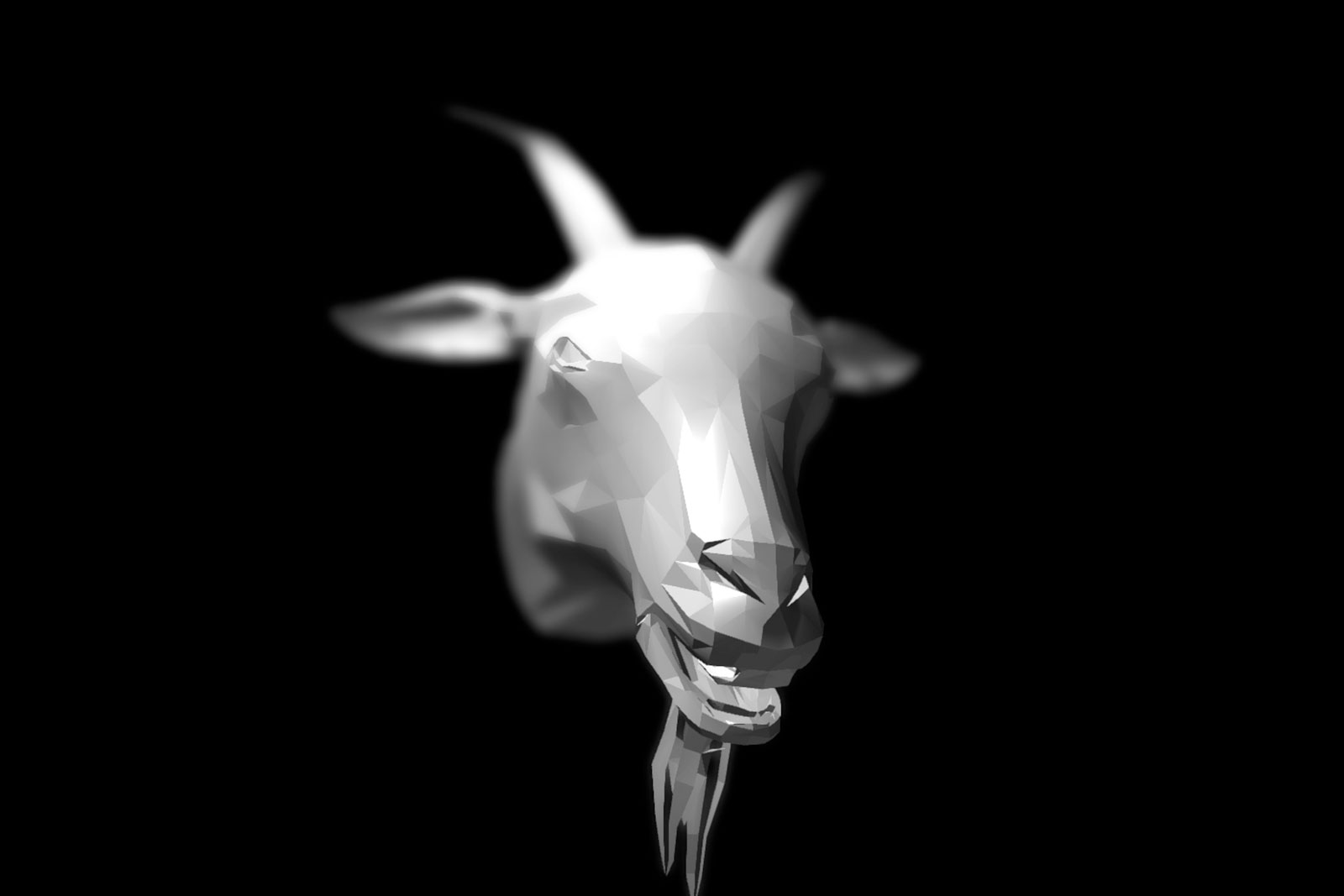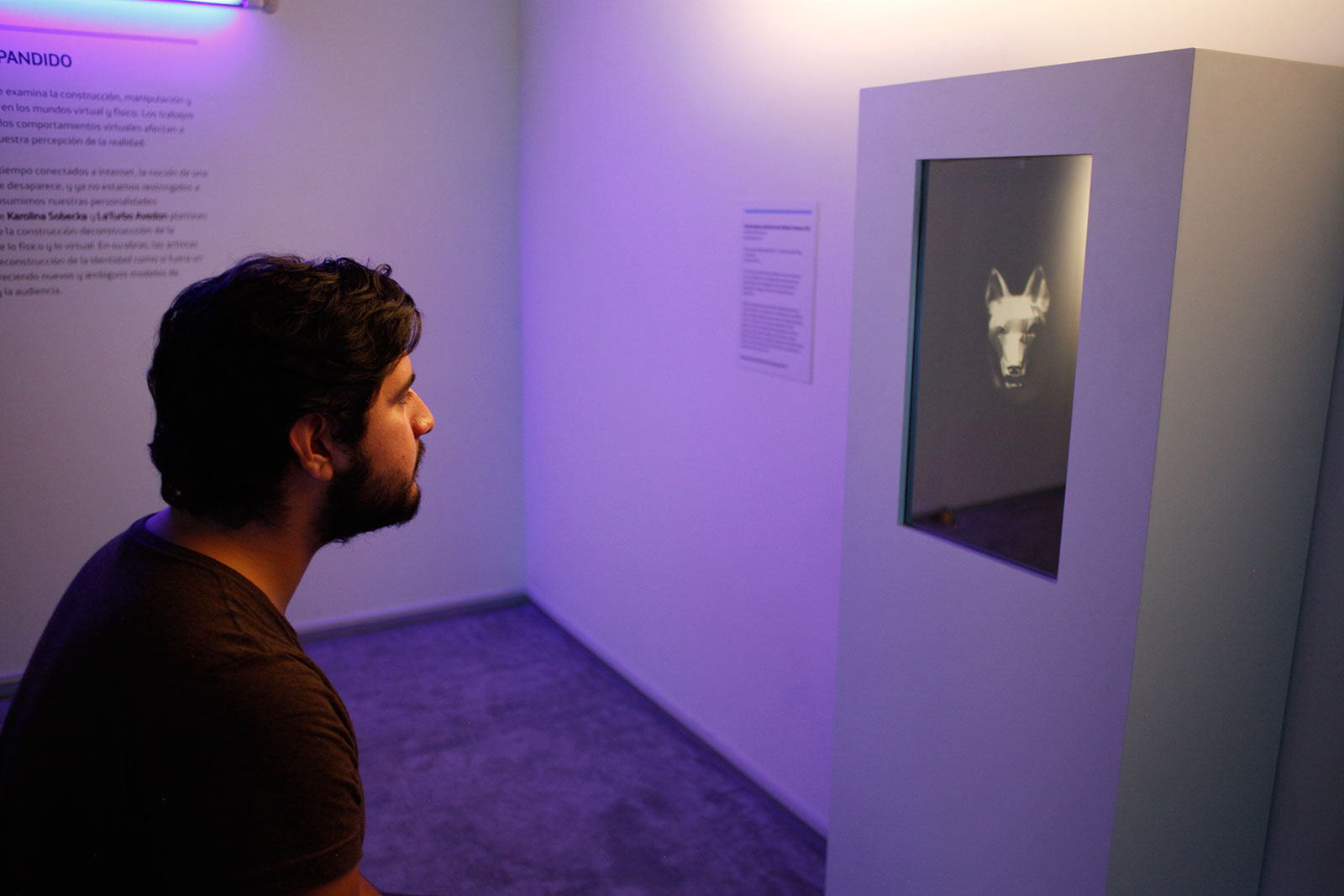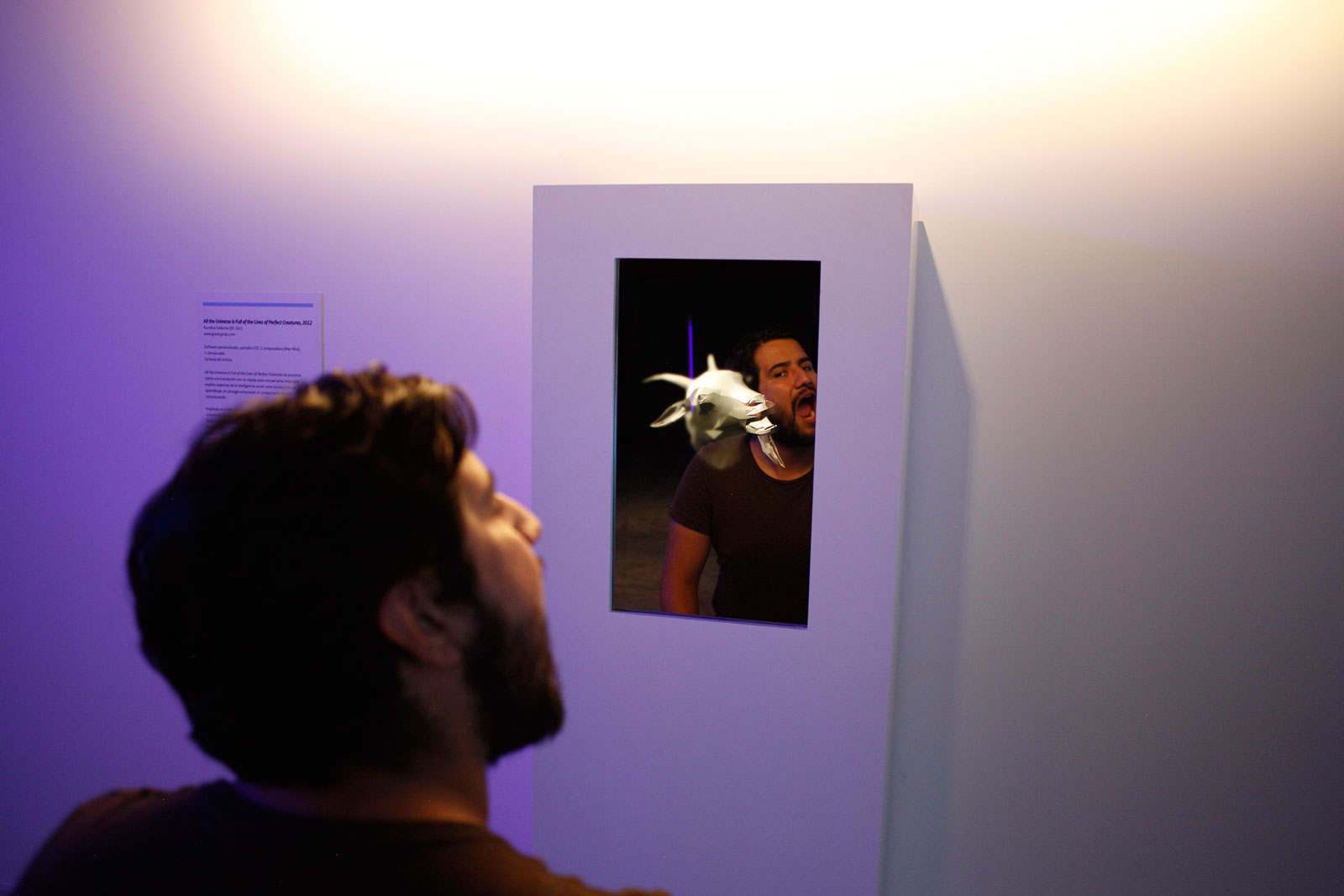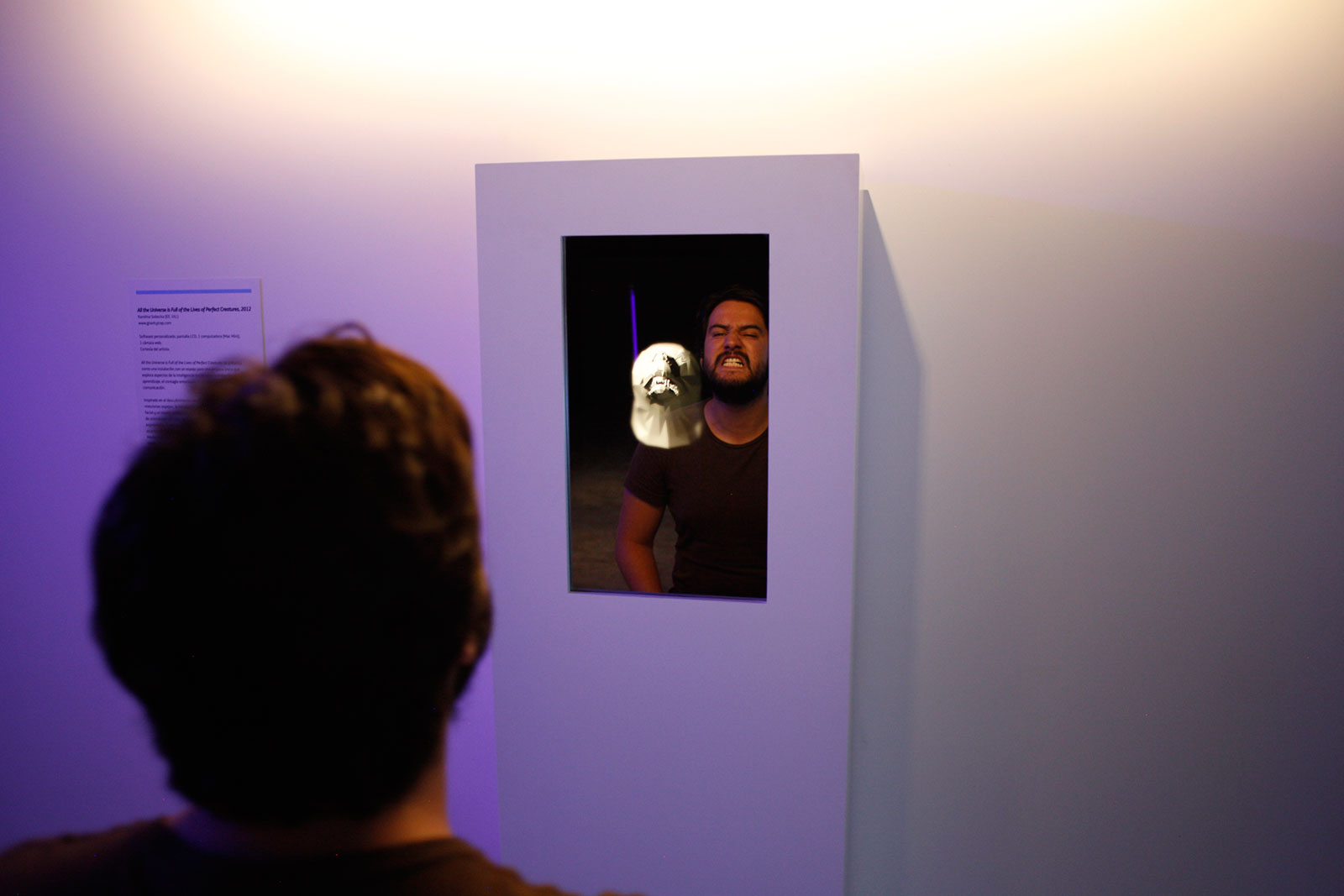Ethics, Excess, Extinction
Section One: ETHICS
Ethics is the critical reflection on how we should act, and why — in this exhibition, how and why we should take nonhuman animals into account in our moral decisions. Humans have long grappled with the moral, legal, emotional, and spiritual dimensions of our interactions with animals (as well as with other humans). It is through ethical thinking that we are compelled to protect animals from cruelty, and to challenge the ways in which we habitually think about, and relate to, the animal kingdom.
How do we give animals their due and recognize that they, too, can hear, smell and observe us; that they, too, are thoughtful and emotional beings that share this world with us? Do they deserve to be treated with the same respect and integrity as we treat our fellow humans? Through animals, we learn much about who we are and about our own humanity.
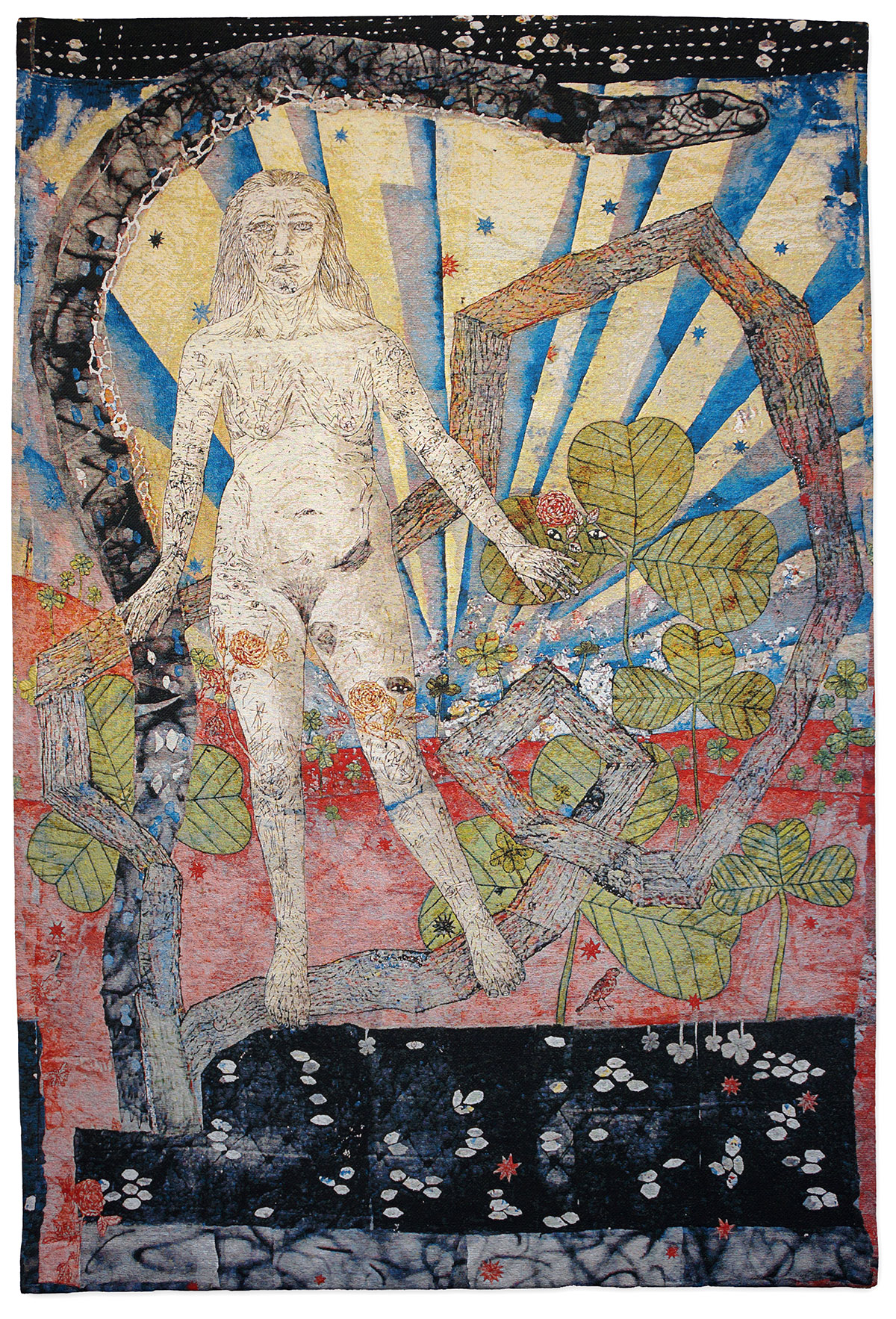
Earth
Kiki Smith, 2011, jacquard tapestry, 118″ x 76″, edition of 10, © 2011, courtesy of the artist and Magnolia Editions
Within the realm of mythological storytelling and spiritual traditions, the role of Kiki Smith’s figures within her tapestries suggests a theme common to all three tapestries: the interconnectedness between human, flora, and fauna. Smith says the cast of plants, animals, and heavenly bodies in her work suggest “how imperative it is, particularly at this moment in time, to celebrate and honor the wondrous and precarious nature of being here on earth.”
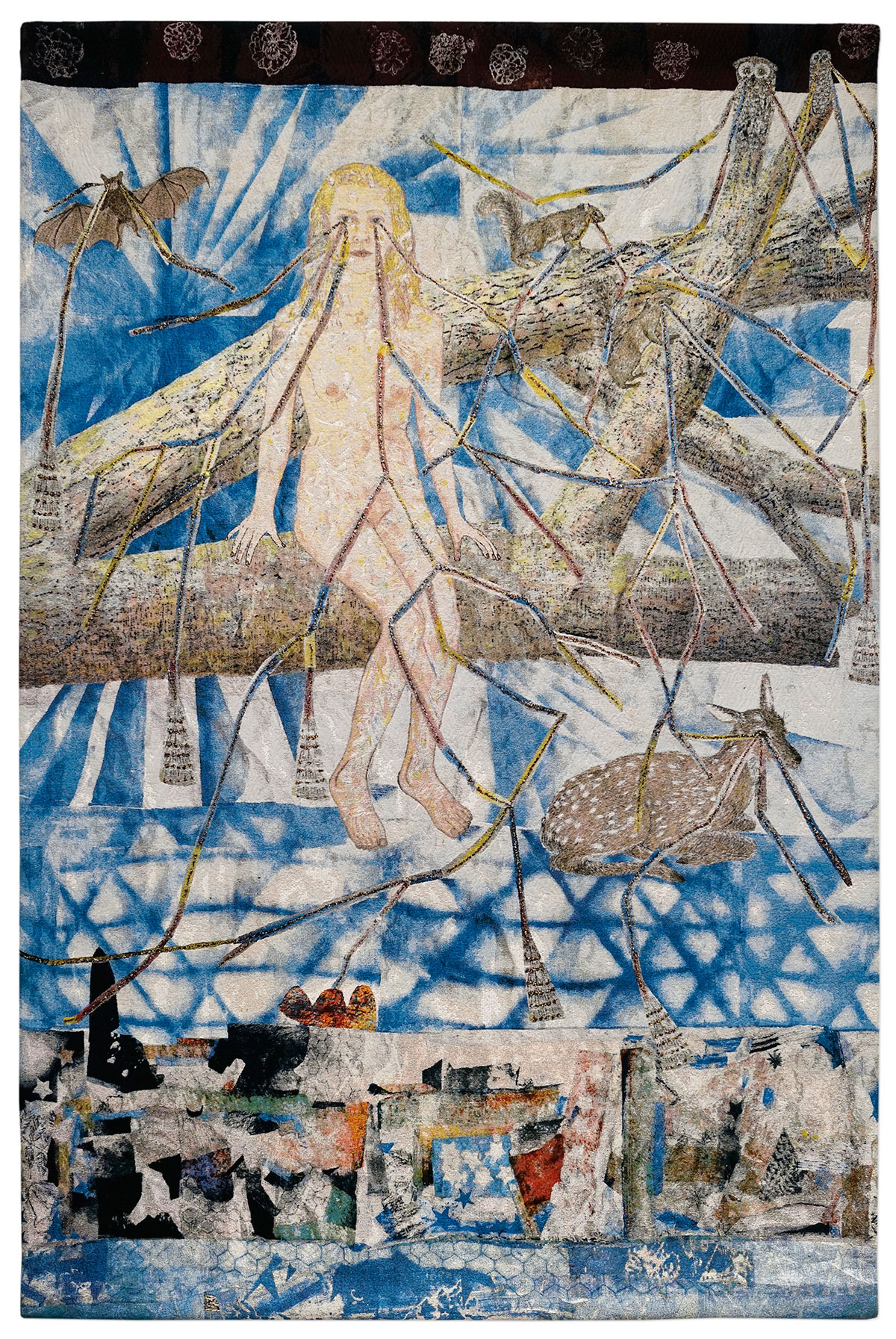
Congregation
Kiki Smith, 2014, cotton jacquard tapestry, 113″ x 75″, edition of 10, © 2014, courtesy of the artist and Magnolia Editions
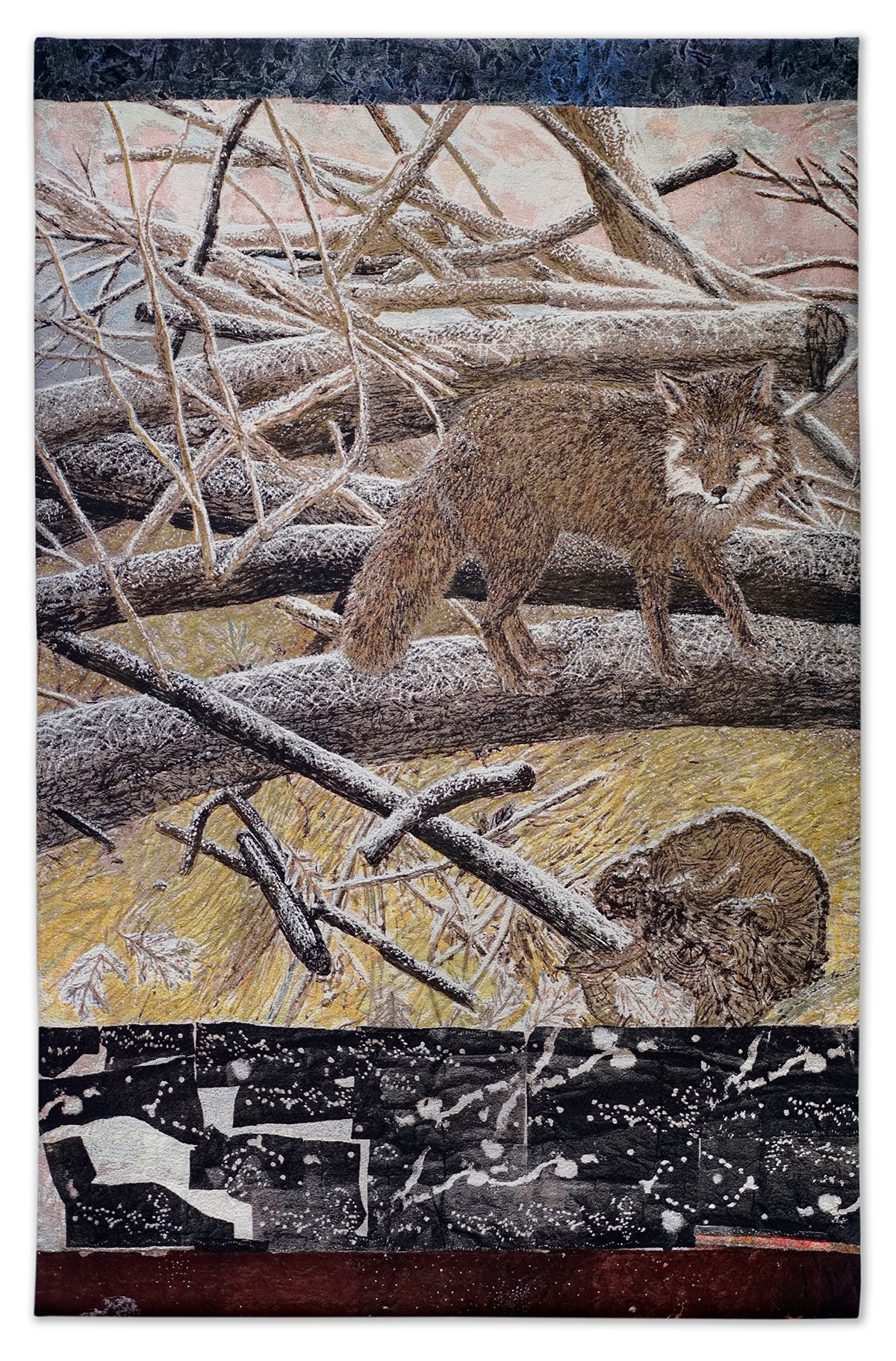
Sojourn
Kiki Smith, 2015, cotton jacquard tapestry, 113″ x 75″, edition of 10, © 2015, courtesy of the artist and Magnolia Editions
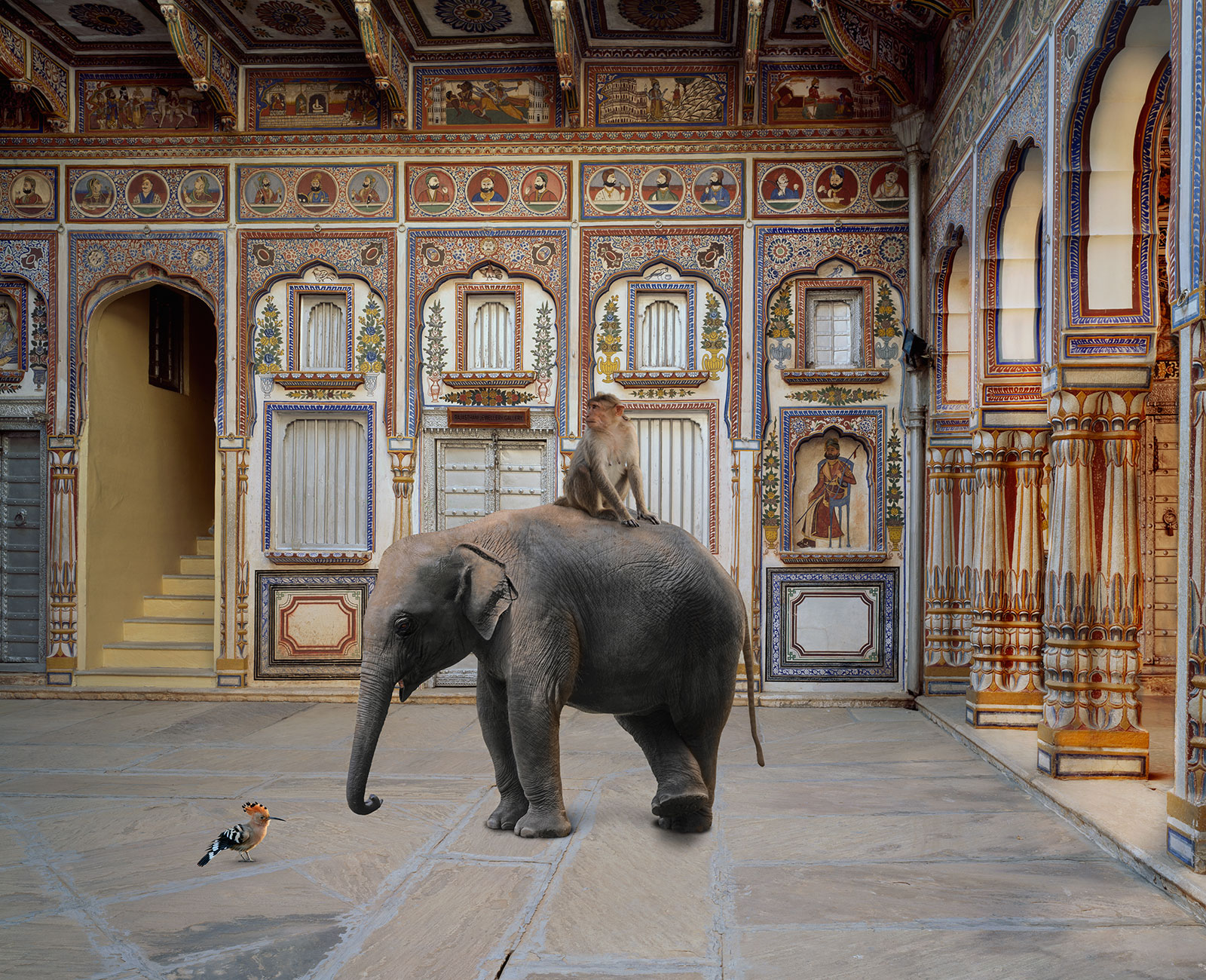
The Conqueror of the World, Podar Haveli, Nawalgarh
Karen Knorr, 2010, photography, 29.5″ x 34″ © 2010, courtesy of the artist
Each photograph from the series, titled “India Song,” is both a mystery and a fable, referencing the vast tradition of picturing animals in art, along with the western appreciation and appropriation of eastern culture and form.
The artist calls the work a memento mori — an object serving as a warning or reminder of death — for our species. The sight of this menagerie, inhabiting and inserted digitally into such grand interiors, arouse a sense of displacement, a realization that for all their power, the animal characters evoke the foibles of power, sadness, and do not belong in these habitats.
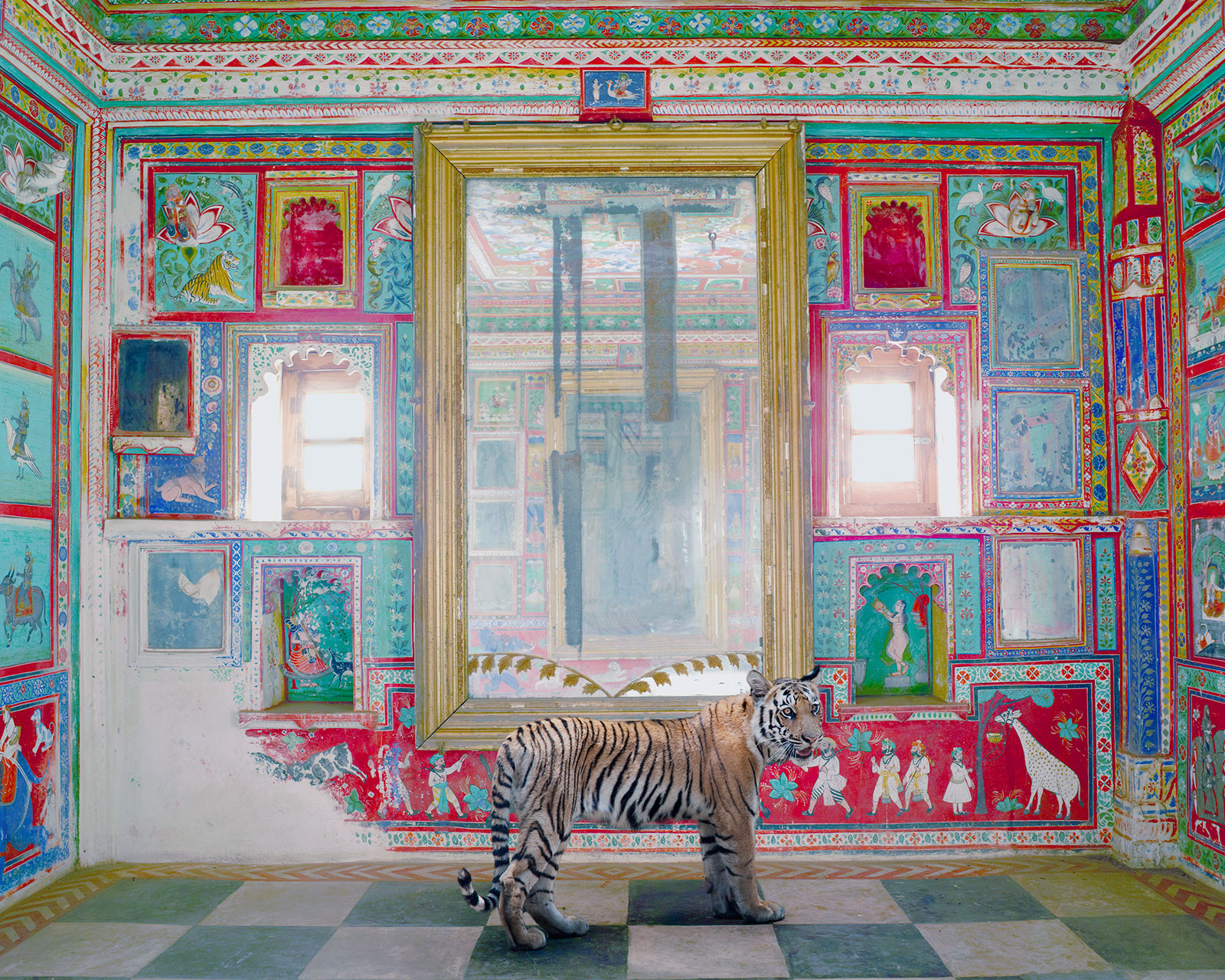
Durga's Mount, Zanana, Junha Mahal, Dungarpur
Karen Knorr, 2012, photography, 29.5″ x 34″ © 2012, courtesy of the artist
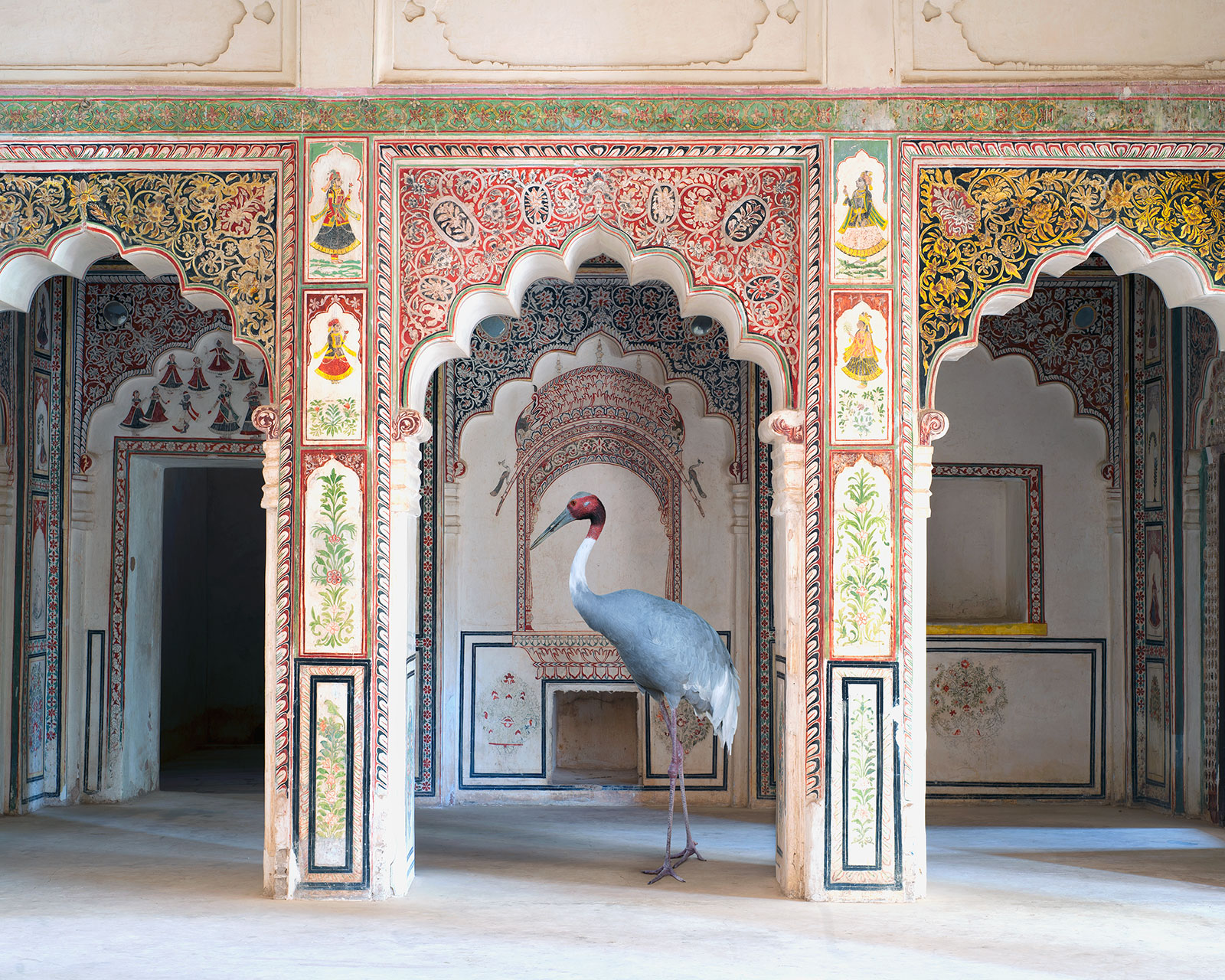
The Search for Sattva, Achichatragarh Fort, Nagaur
Karen Knorr, 2008-2014, photography, 20″ x 25″ © 2008-2014, courtesy of the artist
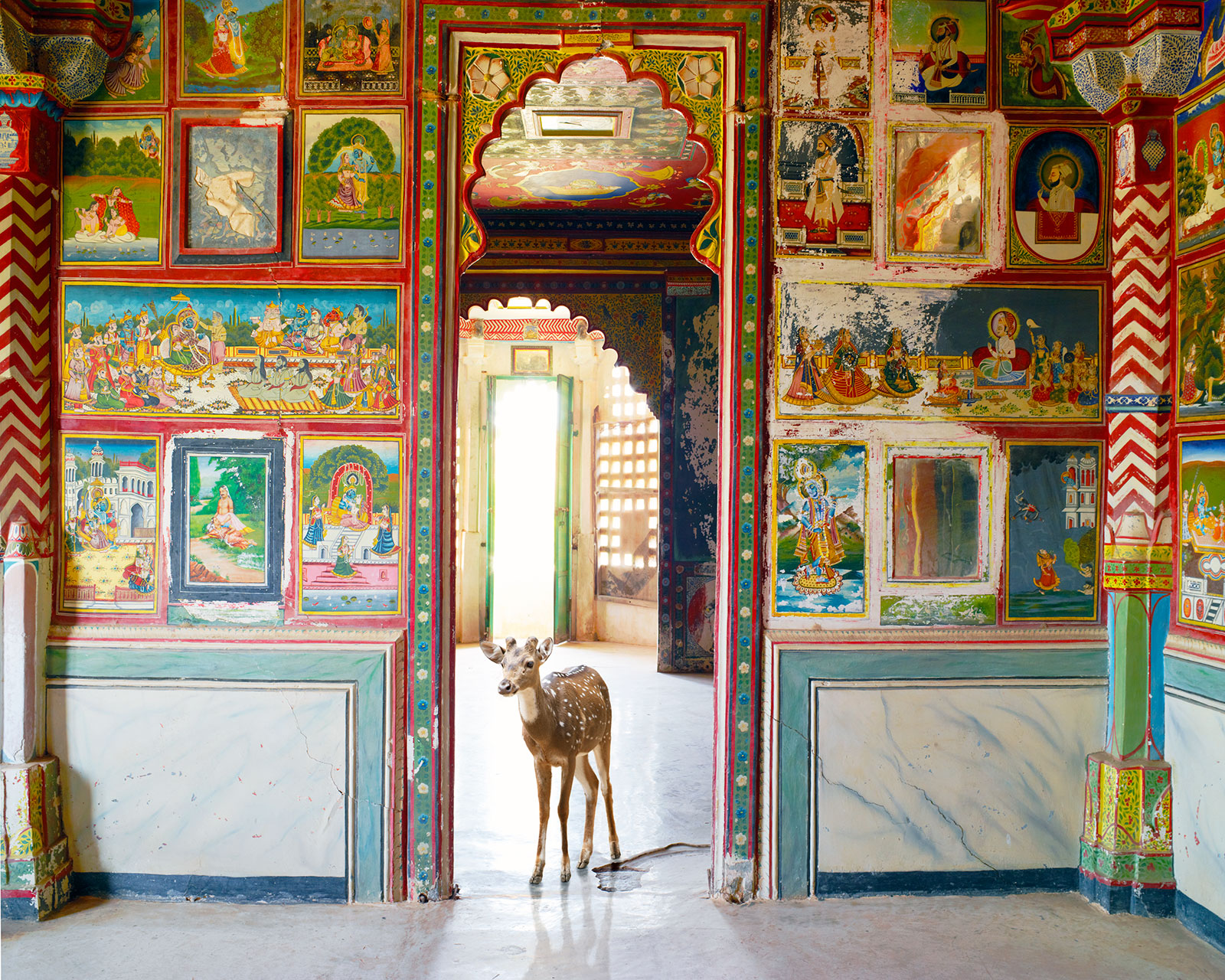
Sita’s Wish, Zanana, Junha Mahal, Dungarpur
Karen Knorr, 2008-2014, photography, 29.5″ x 34″ © 2008-2014, courtesy of the artist
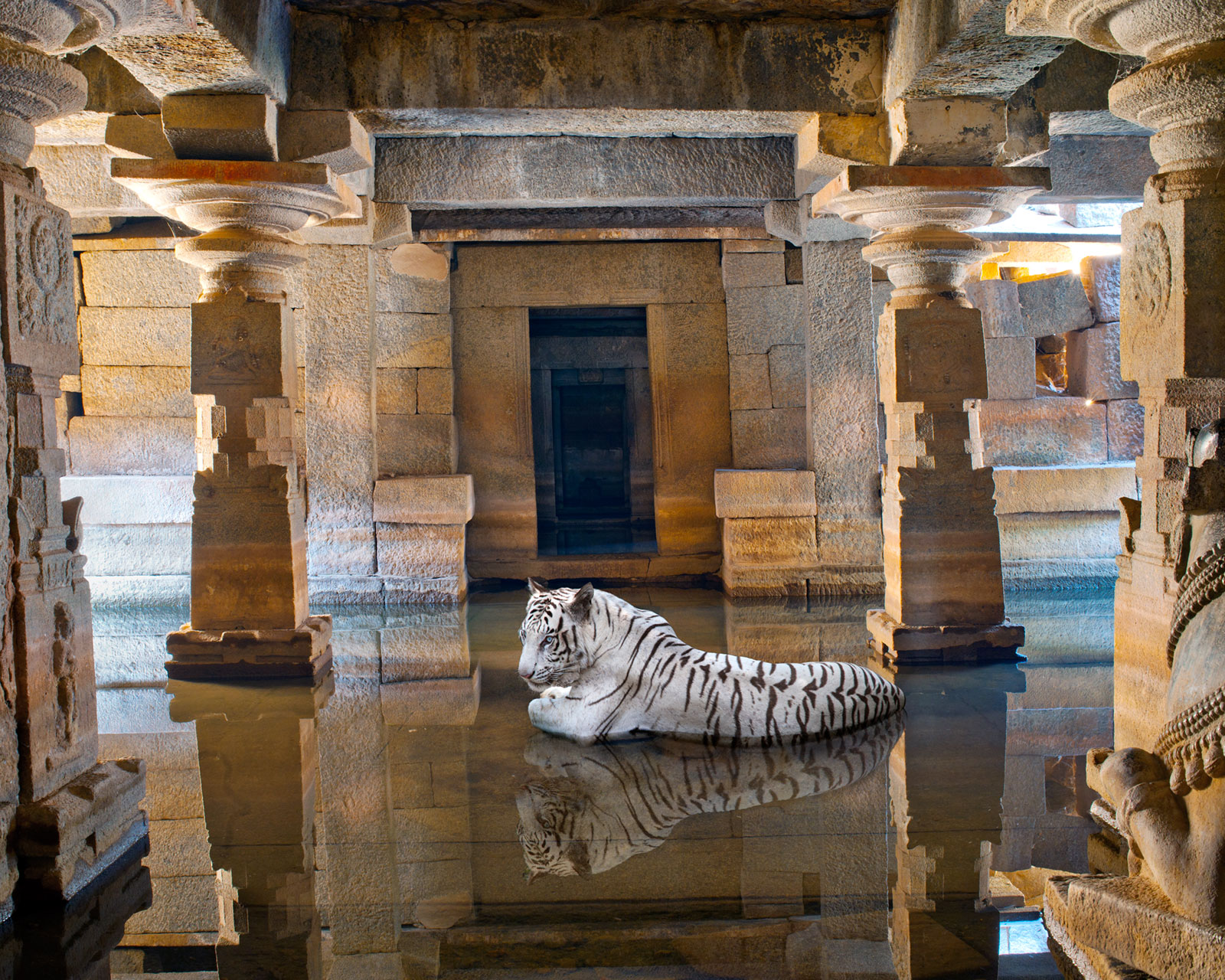
Bhaktii, Path of Sants, Shiva Temple, Hampi
Karen Knorr, 2012, photography, 29.5″ x 34″ © 2012, courtesy of the artist
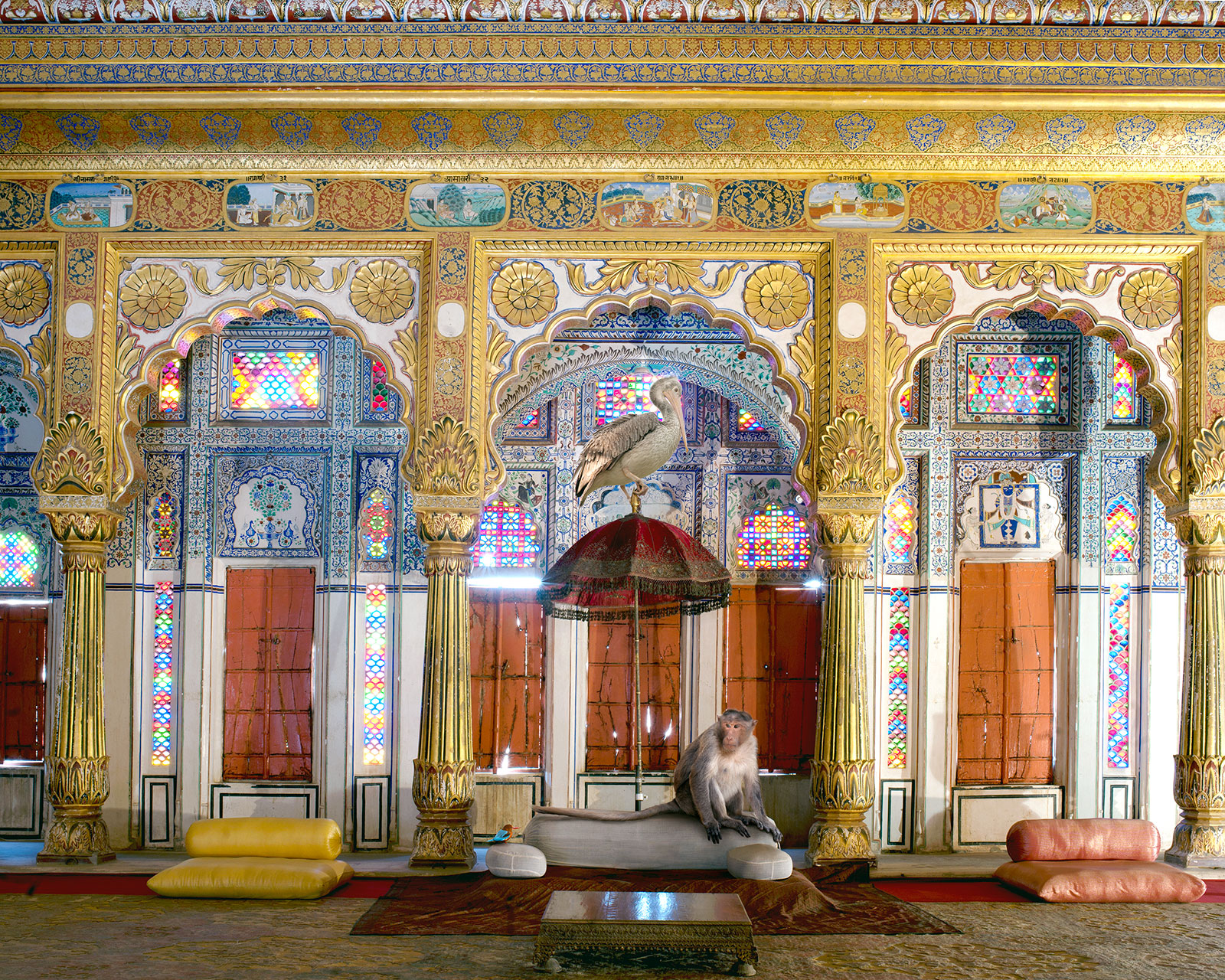
Discussions Concerning Rasa, The Phool Mahal, Mehrangarh Fort, Jodhpur
Karen Knorr, 2011, photography, 29.5″ x 34″ © 2011, courtesy of the artist
All the Universe is Full of the Lives of Perfect Creatures
Karolina Sobecka, 2012, interactive video, © 2012, courtesy of the artist
Sobecka transforms the familiar ritual of gazing into a mirror into an existential experience of the amalgamation of self and other. The projected animal face both mimics the viewer and acts independently, leading to a dance-like interaction that features reciprocity and originality. The resulting effect invites us to explore self-awareness, empathy and nonverbal communication.
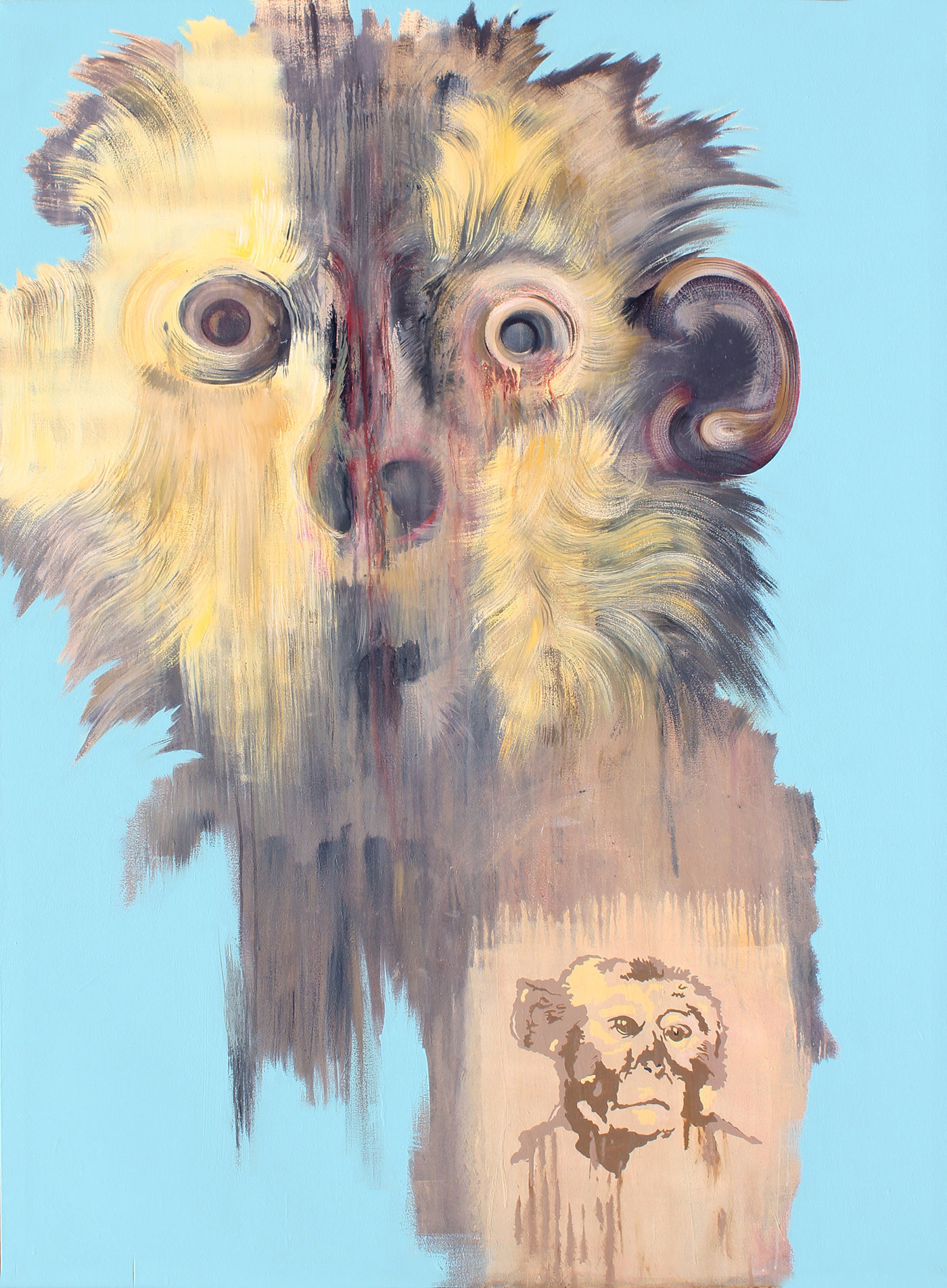
Before and After
Gale Hart, 2010, acrylic on canvas, 72″ x 54″ © 2010, courtesy of the artist
Gale Hart’s work raises awareness of our prioritization of animals based on our attachments to them, sometimes going as far as considering pets as our children. Yet, we allow other animals to be treated in ways that we would find unimaginable and unacceptable for our own animal companions.
For Hart, who uses humor as an antidote, there is no justification for cruelty. Why Not Eat Your Pet? is a series that dares to compare our pets to all the other animals we eat, experiment on, wear, and use for entertainment. The intent is to express animals’ pain and suffering, not with shock or gore, but with a work of art that drives a message so poignant that one can’t help but think — and be moved to care.
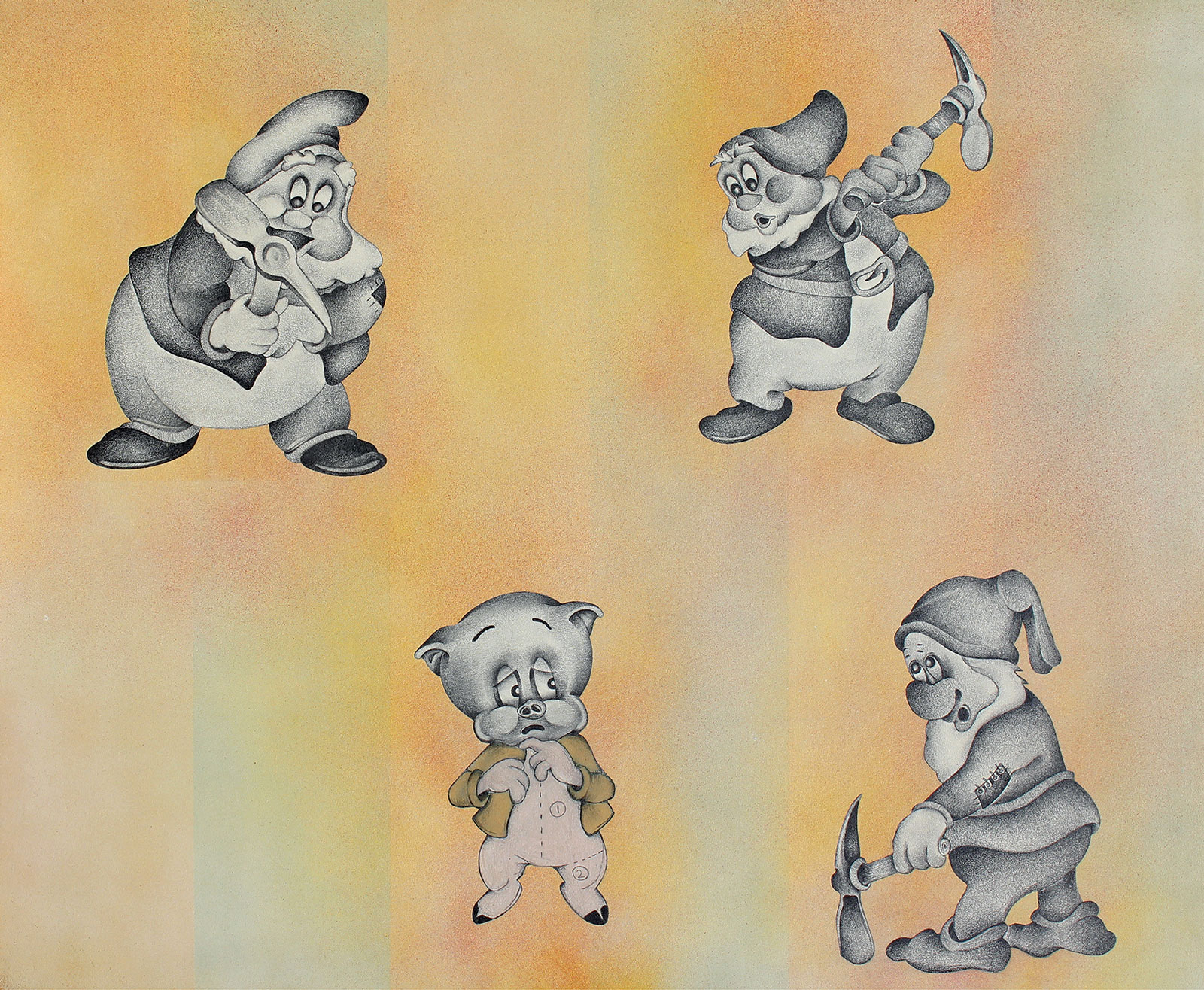
You Don't Pick How They Are Killed
Gale Hart, 2007, pencil and paint on board, 31″ x 25″ © 2007, courtesy of the artist
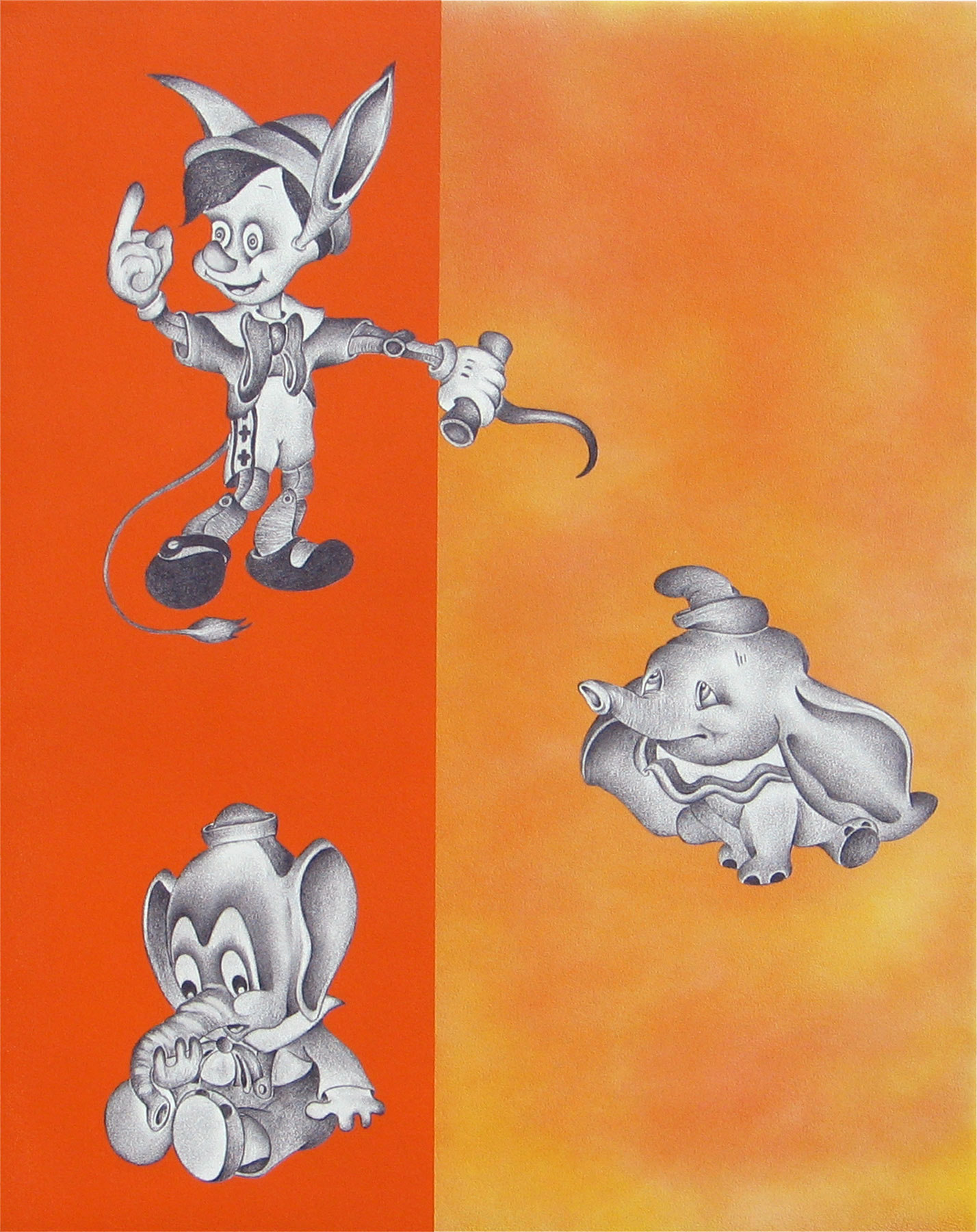
Question Ringling's Animal Trainers; They'll Lie and Give You the Finger
Gale Hart, 2007, pencil and paint on board, 24″ x 19″ © 2007, courtesy of the artist

Will Perform Sick, Tired, or Injured
Gale Hart, 2006, steel sculpture installation, dimensions variable (3′ x 20′) © 2006, courtesy of the artist


